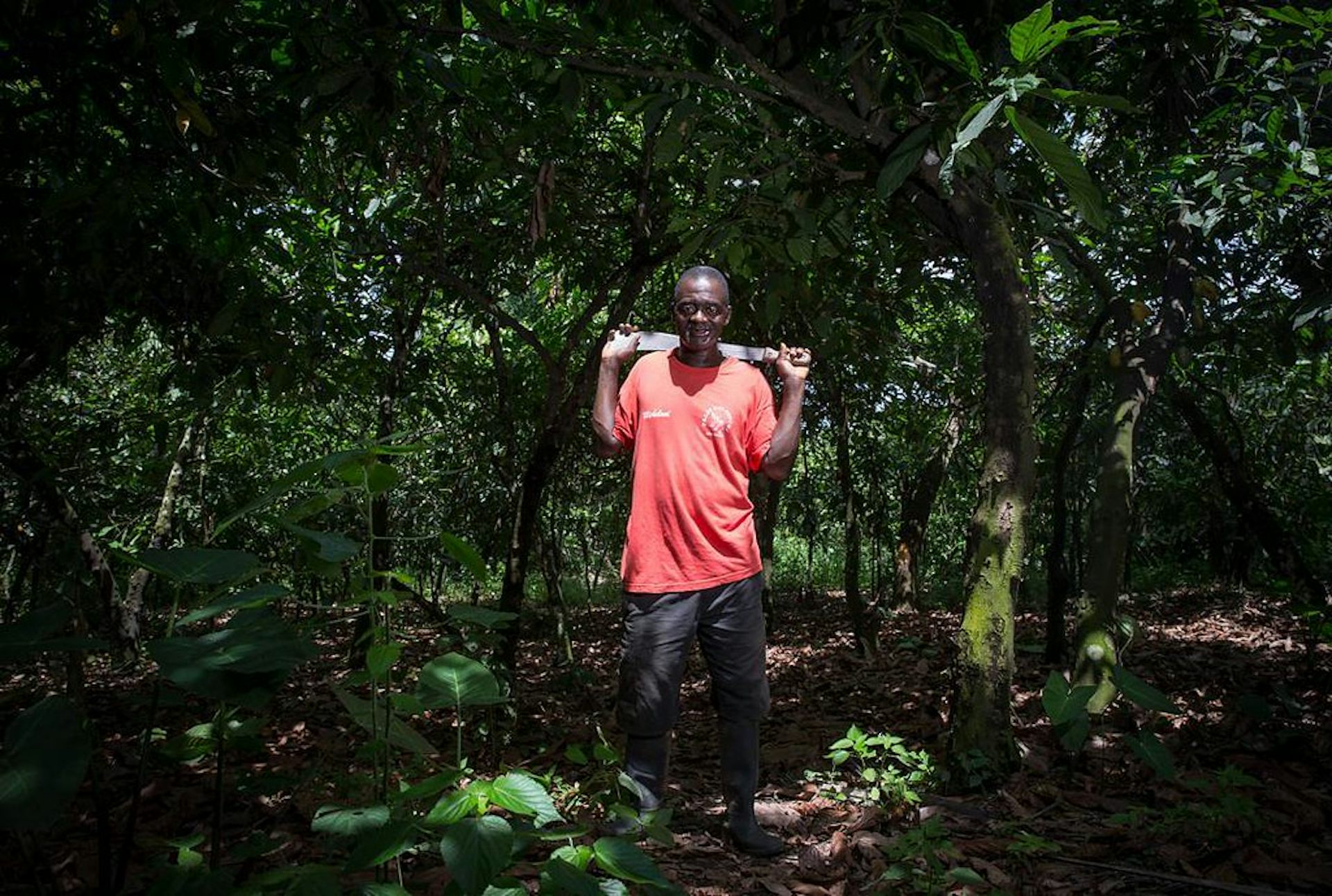
Cocoa production has been the backbone of Ghana’s economy since the 1870s. It dominates the agricultural sector and contributes about 30% of the country’s export earnings. Cocoa employs about 800,000 farmers directly. It also supports the livelihoods of others in the commerce, service and industrial sectors of the Ghanaian economy. This makes it an important generator of revenue.
Most studies of cocoa production have focused on its economic benefits. Less attention has been paid to its environmental impacts. But cocoa farming has enormous environmental consequences. This is because it can only take place in Ghana’s forest agro-ecological zone. In this zone, the rainfall is ideal for cocoa at 1500-2000mm, with a dry season of about four months. Also, cocoa trees thrive under shade.
But with rising demand for cocoa on the world market, large areas of forest cover have been lost to its cultivation.
The expansion and cultivation of new parcels of forest land, the replacement of old cocoa trees and the abandonment of old cocoa farmlands due to loss of soil fertility, have depleted the country’s forest cover. Between 2010 and 2015, 117,240 hectares of forest were cleared.
This loss is a threat to the very industry that is causing it.
Over the years researchers, policy makers and practitioners in Ghana’s agricultural and environmental sectors have underestimated the environmental impacts of agricultural activities such as cocoa production.
The link between low productivity in the cocoa sector and environmental impacts is contributing to uncertainty in the sector’s long-term sustainability. There is, therefore, an urgent need for more research, policies and strategies that will help minimise the environmental impacts of cocoa production.
We undertook a study to assess these environmental impacts. We focused particularly on practices such as the clearing of cocoa farms and the use of insecticides and fertilisers.
Cocoa and the environment
There is ample evidence to show that in Ghana, the gains made from the cocoa industry can only be sustained if the natural environment is protected.
Despite its enormous economic benefits, the sector is threatened by the degradation of forest resources. Cocoa is an understorey crop; this means it grows well under the shade in the forest zones. The soil structure and fertility in these areas also support cocoa production. Finally, the ideal rainfall and temperature requirements can only be found in the forest zones. Degrading the forest zone is a major threat to cocoa production in Ghana because it cannot simply move to another area.
Evidence also suggests that negative environmental practices are reducing cocoa productivity though they are intended to increase productivity.
For example, clearing virgin forest to make farmland poses a serious threat to biodiversity.
Some studies highlight the consequences of using chemical fertilisers, insecticides and pesticides to boost cocoa harvests and to get rid of diseases and pests. These chemicals can destroy organisms that enhance soil fertility and pollute water bodies near cocoa farms. There is a need to minimise the environmental costs of these farming practices.
Another major source of deforestation from cocoa production is through the construction of feeder roads. Research has shown that a total of 3,000 km of new feeder roads have been constructed since 1999 to link cocoa farms to marketing outlets.
The way forward
To produce cocoa in an environmentally sound manner, local authorities should take on the responsibility of enforcing regulations regarding forest clearing and agro-chemical application. Local level representatives, traditional leaders and community-based organisations are closer to the issues of chemical pollution and forest resource depletion. They are in the best position to address the issues.
For example, these groups and individuals can help monitor the agricultural practices of farmers in their local areas. The community based approach to environmental management has worked in Latin America and the Caribbean region.
Institutions such as the District Assemblies, Forestry Commission and the Environmental Protection Agency must get the technological equipment they need for monitoring and enforcing environmental regulations. This equipment may include drones for monitoring and GPS devices for mapping out the location of cocoa farms.
Working with the Environmental Protection Agency, the Ghana Cocoa Board should train cocoa farmers in the responsible use of agro-chemicals to forestall the contamination of water bodies. Farmers should also be encouraged to use organic fertilisers such as poultry manure, as well as biological control of pests and diseases because these approaches are known to be eco-friendly.
The environmental impacts of some unsustainable farming practices can also be addressed by enforcing land use regulations on farming along water bodies. Ghana’s Zoning Guidelines and Planning Standards call for a buffer of at least 100 feet on both sides of bodies of waters.
One challenge is that the literacy rate of cocoa farmers in Ghana is low. Environmental strategies are more effective where the target groups have a high level of environmental literacy. This means that efforts should be made to improve cocoa farmers’ environmental literacy.![]()
Stephen Appiah Takyi, Lecturer, Planning, Kwame Nkrumah University of Science and Technology (KNUST) and Owusu Amponsah, Senior Lecturer, Department of planning, Kwame Nkrumah University of Science and Technology (KNUST)
This article is republished from The Conversation under a Creative Commons license.

